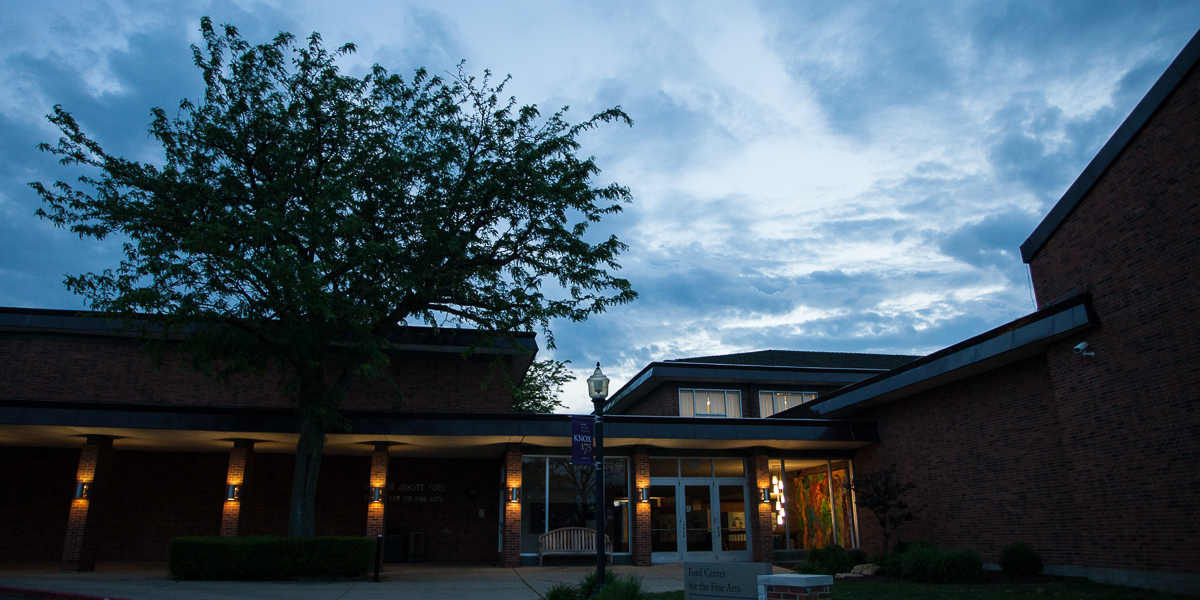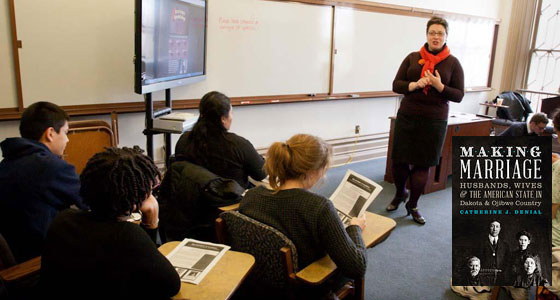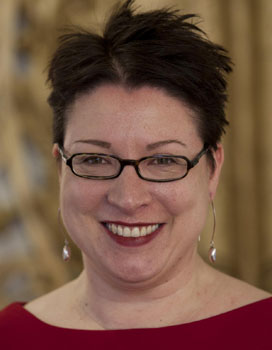Knox Stories
Michael Takeo Magruder Named First Knight Fund Distinguished Artist-in-Residence
Knox College will host its first-ever Knight Fund Distinguished Artist-in-Residence, Michael Takeo Magruder, from September 16 to September 30, 2025
Venture Boldly

Office of Communications
2 East South Street
Galesburg, IL 61401


Knox College Associate Professor of History Catherine Denial says that her "back and forth" interactions with Knox students, especially in her History of Marriage class, helped her transform her dissertation into the new book, Making Marriage: Husbands, Wives, and the American State in Dakota and Ojibwe Country.
The book explores differing conceptions of marriage and social order that existed among early nineteenth century American settlers and the long-existing Dakota, Ojibwe, and mixed-heritage communities in the Upper Midwest, particularly in what is now Minnesota. The book was published in August 2013 by the Minnesota Historical Society Press. (Photo above: Catherine Denial teaching a class. The cover of her book is inset at lower right.)
“Through the stories of married -- and divorcing -- men and women in the region, we can trace the uneven fortunes of American expansion in the early nineteenth century, and the nation-shaping power of marital acts,” said Denial, a member of the Knox faculty since 2005. By shedding light on the stories of women, who often are overlooked in American history, different truths and perspectives emerge, she said.
Denial's teaching interests include American Indian history, women and gender in North America, and sexuality and marital law.
Would you briefly explain how the idea for this book came about? How long have you been working on it?
The roots of this book are way back in the early days of my graduate school experience. I decided to examine the legal status of women in nineteenth-century Wisconsin for my Master's thesis. (I chose Wisconsin because I was at the University of Wisconsin-Milwaukee.)
In searching through reels and reels of microfilm, detailing all the laws passed by the territorial government of Wisconsin, I found a divorce settlement between an American man, Joseph, and his half-Ojibwe wife, Margaret. The two were allowed to divorce because of "the hostile incursions of Sioux Indians" against them. I didn't know a lot of legal history at the time, but I had the sense that moving would better solve that problem than divorce. So I began trying to explain why the territorial government permitted Joseph and Margaret to separate, and from there I discovered dozens of other stories of married and divorcing men and women.
What attracted you -- and what continues to fascinate you -- about this subject matter?
I love to tell the stories of women, because they've so often been left out of the narrative of American history. Women's lives often tell us quite different things than men's lives do.
For example, the men who founded Minnesota are quite famous in the state, and the record they left behind suggests that they arrived and established an American place easily and quickly. By looking at the stories of their marriages, however, and seeing the world through the eyes of their wives, I find that that story isn't true -- things were difficult for Americans for a very long time.
It's also important to view the history of settlement from the perspective of American Indian people, whose stories have likewise often been ignored. Americans in the early nineteenth century didn't move to Minnesota, they moved to Dakota and Ojibwe country. Reclaiming a past in which Dakota and Ojibwe people are as fully realized as Americans is very important to me.
What is the relationship between your research for the book and your teaching at Knox?
The vast majority of the research for my book was done as I was writing my dissertation at the University of Iowa. When I came to Knox, I followed my advisers' advice and put my dissertation in a drawer for a couple of years to let my brain clear before I tackled its revision. In the meantime, I taught a course on the History of Marriage at Knox, and quickly realized that the story I was teaching my students was the story that had the potential to be at the heart of my book.
I'm not sure I would have known how to transform my dissertation without that back and forth with my students, answering their questions, and crafting a course to teach them how important marriage has been to the business of the American state through time.
What do you think will most surprise or intrigue the readers of this book?
The book is written around the stories of four women, and I think readers will be surprised at how much it's possible to reclaim about their lives, when many of them were illiterate and few of them had what we might call power. There are also some fascinating little details that continue to entertain me, years after I discovered them. The opinion of missionary Mary Riggs about her future husband's looks, for example, is a hoot.
Published on August 22, 2013